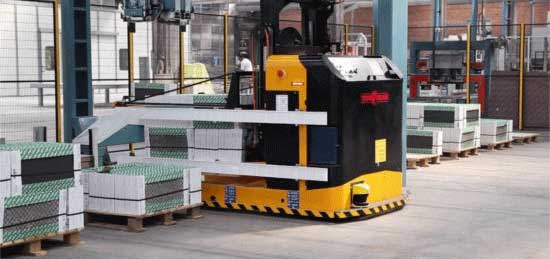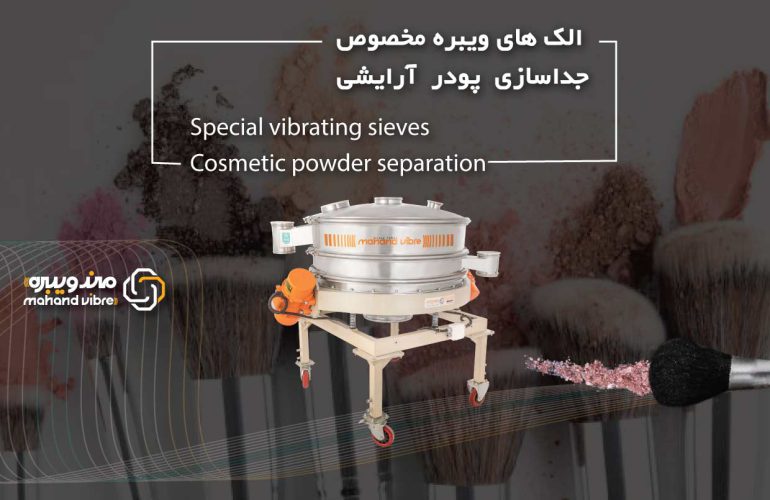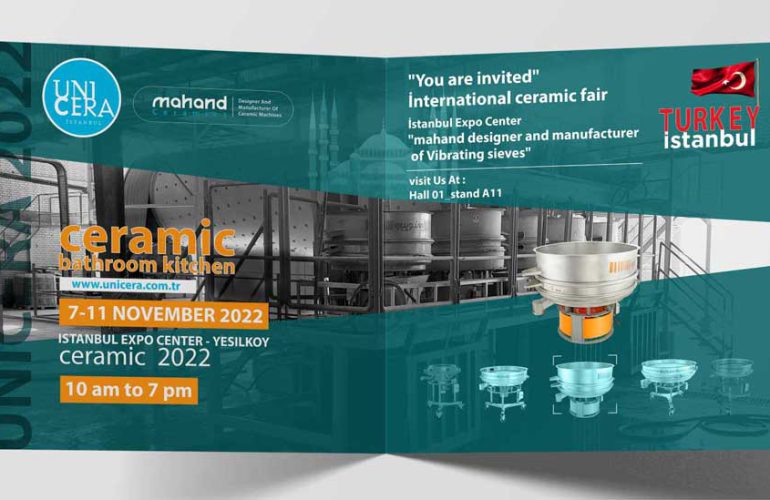TGV in the tile and ceramic industry is an automatic and intelligent transport device that uses artificial intelligence and systems (PLC) to carry the boxes related to ceramic tiles, which are the storage places for ceramic tiles in such factories. , in such a way that after the box is filled in the car (loading) or it is empty (unloading), the box exchange command is issued from the desired car to the control room and the PLC system after processing the type of process to the nearest TGV in terms of location, It issues the command to pick up and move the box. The reason that the nearest TGV is chosen for service is that the artificial intelligence system requires that the cost of moving the box be minimized, both in terms of time and depreciation of the car.
The external structure of the TGV
The TGV consists of a cubic mold of very hard iron that is used for the chassis. There are three very important compartments inside this chassis:
1- Hydraulic and mechanical chamber which includes components such as hydraulic pump, condenser pump (cooling system), oil tank, valves, hydraulic connections and cooling fan.
2- The battery compartment in which a very powerful battery of about 240 amp hours is placed.
3- The housing of the electrical panel and the command and data transmission system, where components such as PLC, command relays, power relays, inverter, sensors and photocells are located.
In addition, the three parts of the device have six wheels to guide the device, which is responsible for the translational movement of the device.
PLC control system
In the past, all movements of a device were done manually. For example, to move an axis, an operator was used to turn the device on and off. With the progress of the industry in this field, these works were done semi-automatically by timers (time relays) and contactors, which caused system failures, high repair and maintenance costs, and lack of necessary safety. It is obvious that these things were done semi-automatically and it was not possible to use it as a fully automatic machine for industrial purposes, because firstly, its maintenance cost was high and secondly, it occupied a lot of space. But with the advent of PLC and microprocessors, there was a huge industrial revolution in this field that all control systems are controlled through a small device known as PLC.
How the TGV moves on the magnetized track
In the past, tile and ceramic boxes were guided by special rails and transported to the production line by an operator (manpower), gradually with the advent of TGV and robotics, this system has completely changed and the transfer of tile boxes through A route is defined and the movement of TGVs along these routes is done automatically and completely intelligently. This track consists of a number of strong magnets that are installed on the ground at certain intervals between the return lines. All the routes that the TGV moves along must have magnets, and if there is no magnet, the TGV will go off the track and leave the automatic circuit.
Advantages of the intelligent TGV system
The advantages of this system include the mechanization of work and the minimization of mistakes, speeding up the carrying out of boxes, reducing damage to raw tiles, summarizing all production statistics and boxes, separating all designs, sizes, Processes and… mentioned.
Disadvantages of the TGV smart system
Among the disadvantages of this system, we can mention the disappearance of manpower and the vulnerability of the network installed in the hall, which may lead to the temporary withdrawal of TGVs from the network circuit. This may lead to the stopping of other TGVs in the production hall, which ultimately leads to a complete stop of the production process.
Another important thing is that the system software may have problems for any reason, in which case all the information related to the boxes, parking lot numbers, designs and colors of the tiles and the numbers of the boxes will be lost. Re-system these items must be manually re-entered into the new system, which is a very difficult and time-consuming task. Meanwhile, until the end of this work, the production process is still stopped. Of course, this problem can be solved by installing a backup system that stores the information sent to the server in parallel second by second.
Source: Ceramics and Construction Magazine





